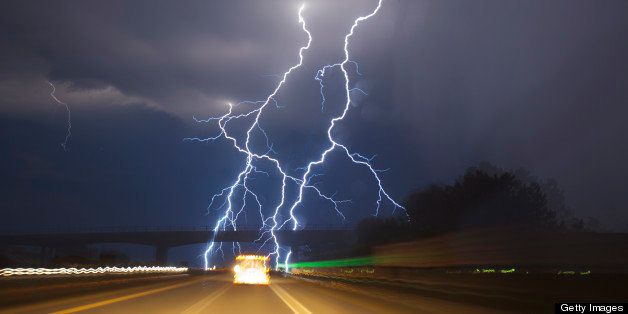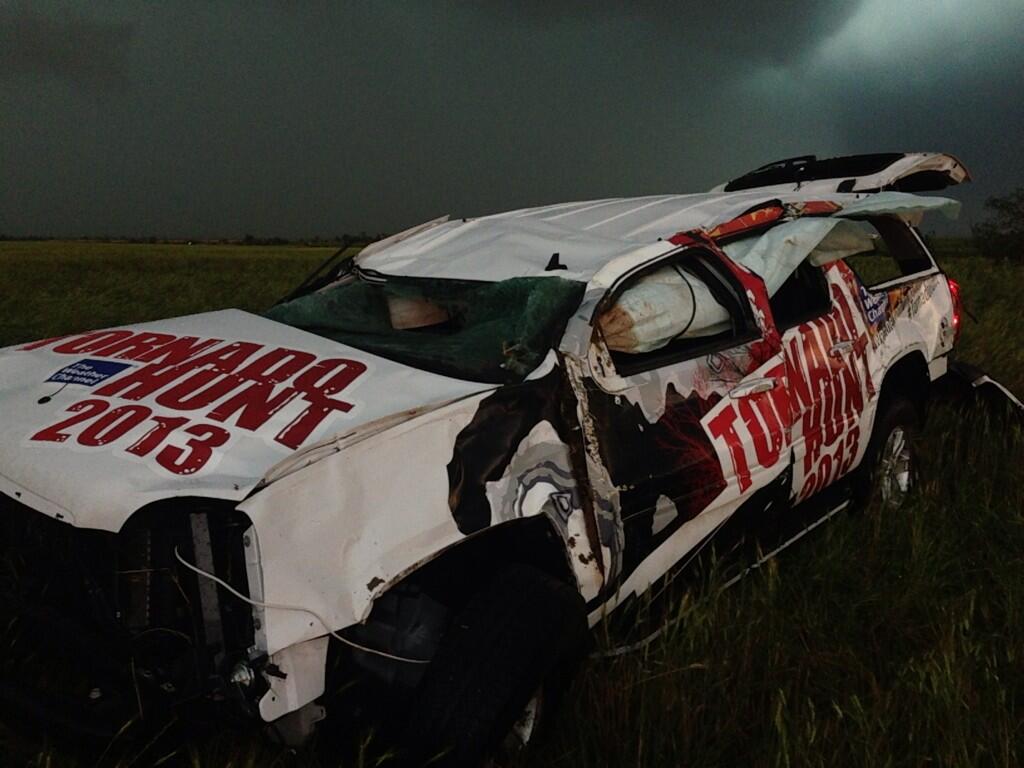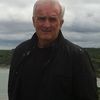
Storm chasers are not crazy. They are either scientists or journalists doing their jobs. Anyone might make an argument that by choosing those endeavors for income they lacked a spoke from one of their wheels, but the truth is that sometimes things choose us.
I never chased tornadoes as a TV news correspondent. Hurricanes, however, I raced in their direction, thrilled by the logistical challenges and slow motion drama that unfolded. I did run to the aftermath of twisters, though. In Wichita Falls in 1979, there were people found inside their cars a few miles from where they had last been seen at stop lights, their vehicles crushed by falling from the sky. Parts of the asphalt were torn back like an earthen scab by the F-5 that passed through Jarrell, Texas in the late 90s, and the Chihuahuan Desert town of Saragosa just disappeared in the first tornado ever recorded in Pecos County, Texas back in the late 80s.
But reporting on what a storm hath wrought is almost cowardice compared to going close to see and understand its power. I always thought tornadoes were to be run away from, not chased. The scientists try to get close enough to determine the funnel's path and then set instruments in front to see if they can gather data that may one day help predict formation and, as a consequence, save lives. But what about the news crews? Why are they taking these risks?
One answer is that their editors in New York want drama. The closer a camera gets to a tornado the more a video can be promoted and drive viewership. Videographers share some of the guilt. Most love risk, getting close to the flame. A combat photographer once told me in Central America that, "After you hear a bullet whiz past your ear, it changes your life. Everything is different." I somewhat glibly responded that, "And the day a bullet enters your ear it changes your life, too. It ends it. That'll be really different."
All of this is prompted by injuries to a friend who is as fine a person as I have ever known and who was a long time colleague in the TV news business. Austin Anderson and I began working together in the early 80s when he was a student at the University of Texas, where his father, Al Anderson, was a legendary journalism professor. There was nothing Austin would not do to get the video to tell the story. We chased criminals across the Caribbean and presidents and hurricanes across the U.S. and he was always where he needed to be with his lens. He made every correspondent with whom he worked look like they were great journalists even when they were often nothing more than the benefactors of Austin's entrepreneurial determination. The lazy ones could've sat at the bar and waited for him to come back with the video, and I know a few who did.

Austin was driving the Weather Channel's Tornado Hunter car near El Reno, Oklahoma when a funnel abruptly changed course and lifted his vehicle. Reports vary on how far it was thrown through the air but it was discovered on the far side of a barbed wire fence after rolling over several times. Mike Bettes, another journalist riding with Austin, said they were "weightless for a moment" and then started tumbling. He escaped serious injury but my old friend Austin is in a hospital in Oklahoma City where he is facing surgery for a broken breastplate, ribs, and damaged vertebra. He is, however, alive. A doctor has indicated it will be at least three months before he can again pick up a camera. But he will pick up a camera again. And he will still be one of the best in the business.
A few of my colleagues from my days in television, and those who never worked in that industry, have expressed dismay that a person might put themselves at risk to get a better, more dramatic piece of video. But that is the mandate of the profession: get more and better than the other crew. Great photographers are also subject to a psychological phenomenon called "distancing," which allows their brains to process what they are seeing through their lens as not real or a part of their immediate environment. There is no other explanation for combat photographers getting video in the midst of fire fights or my friends Jim Peeler and the late Dan Mulloney who stood with their cameras in the crossfire between ATF agents and the Branch Davidians of David Koresh to record some of the most famous news video in history.
I believe in the kind that puts distance between any tornado and me.
Also at: http://www.moorethink.com
